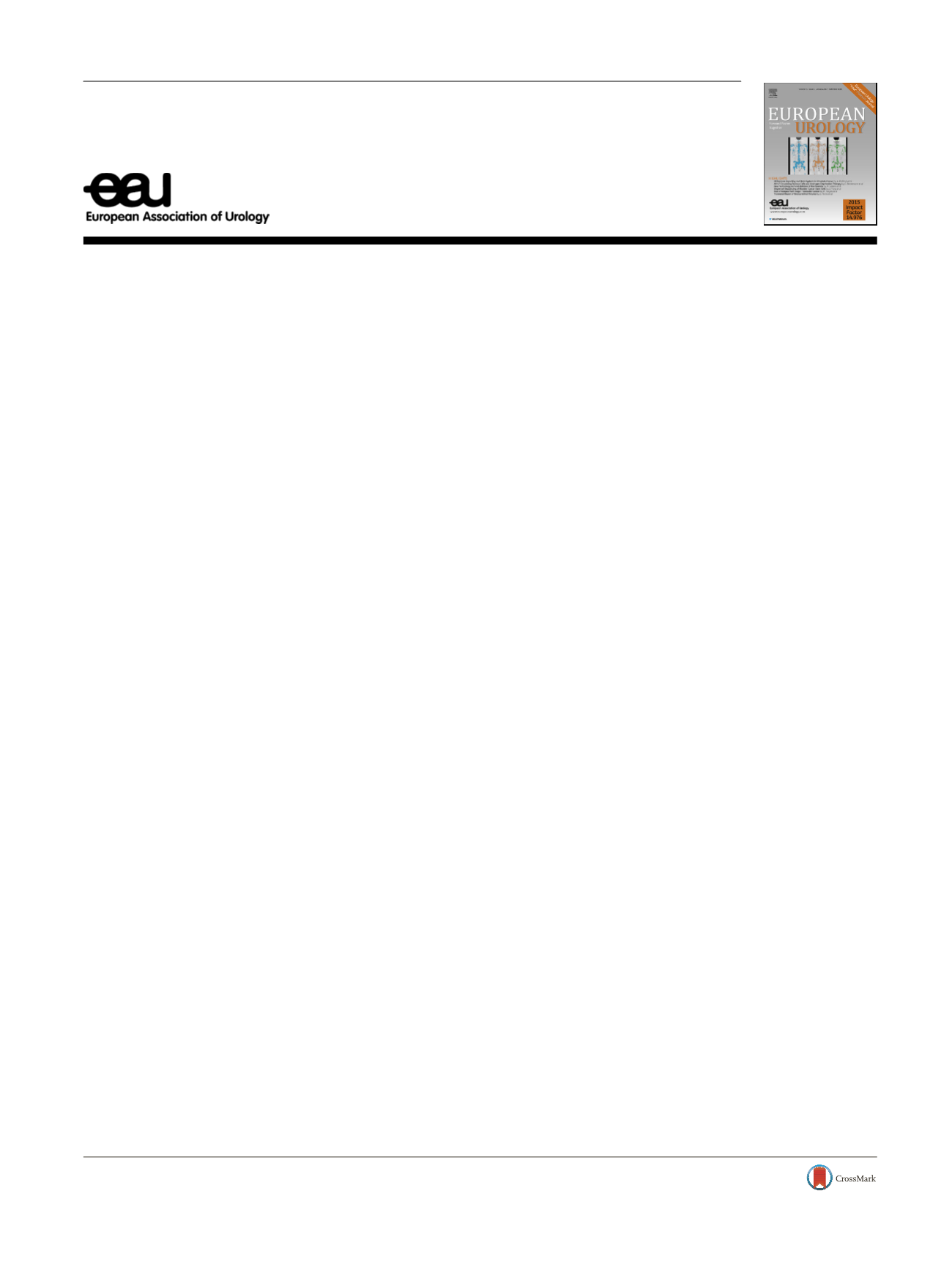

Platinum Opinion
Salvage Lymph Node Dissection for Node-only Recurrence of
Prostate Cancer: Ready for Prime Time?
Nazareno Suardi, Alberto Briganti, Giorgio Gandaglia, Nicola Fossati, Francesco Montorsi
*Department of Urology, Vita-Salute San Raffaele University, Milan, Italy
Biochemical recurrence (BCR) is common after both radical
prostatectomy and radiation therapy for organ-confined
prostate cancer (PCa)
[1]. Although an indolent course can
be expected for the majority of patients with BCR, roughly
20% of them die of PCa within the next 5 yr. In order to
identify patients at risk of progression, it is extremely
important to identify both the site and the extent of
recurrence, since it has been clearly demonstrated that they
both have a significant impact on survival
[1]. Conventional
computed tomography (CT) scans and bone scans have very
low sensitivity at low prostate-specific antigen (PSA)
values. However, the best results are obtained if salvage
therapies are delivered promptly
[1]. After the introduction
of more sophisticated imaging modalities, the paradigm is
gradually changing. In particular, 11C-choline positron
emission tomography (PET)-CT scan showed high sensitivi-
ty in the identification of the site of recurrence even at low
PSA values
[1]. Furthermore, with the rapid technological
advances in nuclear medicine research, a new set of tracers,
especially based on the prostate-specific membrane anti-
gen, have been shown to correctly characterize the site of
recurrence at very low PSA values (ie,
<
1 ng/ml)
[2].
1.
Why the lymph nodes?
In a recent study from Australia, 70 consecutive patients
with BCR and a median PSA of 0.2 ng/ml were submitted to
68Ga-prostate-specific membrane antigen-PET/CT. The
authors found that the vast majority of recurrences outside
the prostatic fossa were located in the pelvic lymph nodes
[2]. In patients with isolated nodal recurrence, the 5-yr
survival rate is 25–50%. Therefore, nodal recurrence of PCa
is frequent and can lead to both metastatic progression and
cancer-specific mortality (CSM). The current European
Association of Urology and National Comprehensive Cancer
Network Guidelines recommend the use of PET/CT scan in
patients with PSA
>
1 ng/ml and/or with short PSA doubling
time. However, when lymph node only recurrence is found,
there are no clear indications on the best management due
to the lack of specific studies addressing the treatment of
these patients, since they are considered as metastatic
patients. Therefore, to date a patient submitted to radical
prostatectomy with a BCR and the evidence of a single
lymph node recurrence at PET/CT scan is considered a
metastatic patient, but only 25–50% of these patients will
eventually progress to CSM
[1]. Therefore, given the
variable prognosis of patients with nodal recurrence,
targeted treatment of patients with isolated nodal recur-
rences have been proposed.
2.
A new treatment modality?
The first series of 25 patients submitted to salvage lymph
node dissection (sLND) was reported in 2007
[3]. The study
reported for the first time the comparison between PET/CT
scan and histological verification of the metastatic lymph
nodes, showing sensitivity, specificity, positive predictive
value, negative predictive value, and accuracy of 64%, 90%,
86%, 72%, and 77%, respectively. In 2011, the peri-operative
and oncological outcomes of 72 consecutive patients
submitted to pelvic and/or retroperitoneal sLND between
2002 and 2009 were reported
[4]. Subsequently, other
series of patients submitted to sLND were published
[5–7] .When considering all available data together, complete
biochemical response after sLND was reported in 22–73% of
patients. However, these figures should be taken with
E U R O P E A N U R O L O G Y 7 1 ( 2 0 1 7 ) 6 9 3 – 6 9 4ava ilable at
www.sciencedirect.comjournal homepage:
www.eu ropeanurology.com* Corresponding author. Department of Urology, Vita-Salute San Raffaele University, Via Olgettina 60, 20132 Milan, Italy. Tel. +39 02 26437286;
Fax: +39 02 26437298.
E-mail address:
montorsi.francesco@hsr.it(F. Montorsi).
http://dx.doi.org/10.1016/j.eururo.2016.12.0010302-2838/
#
2016 European Association of Urology. Published by Elsevier B.V. All rights reserved.
















